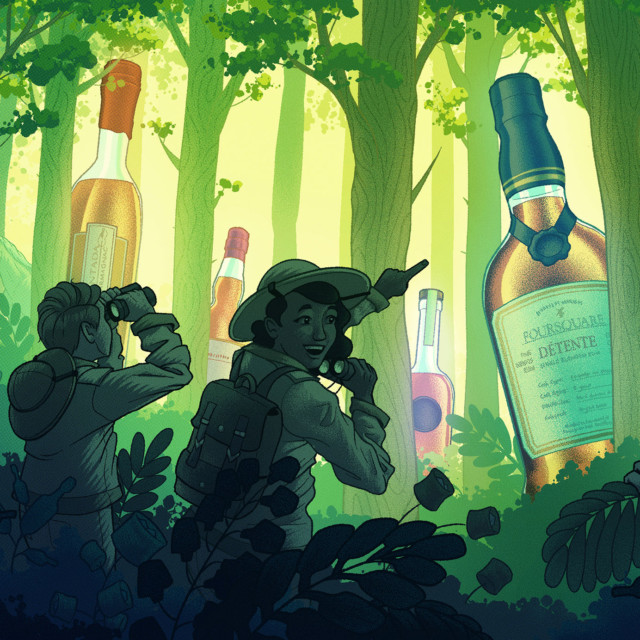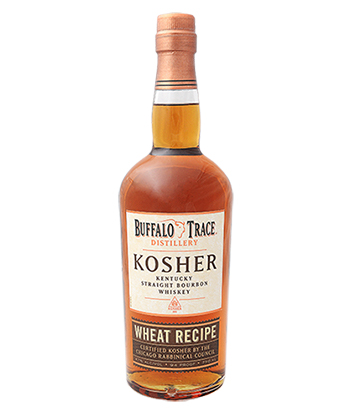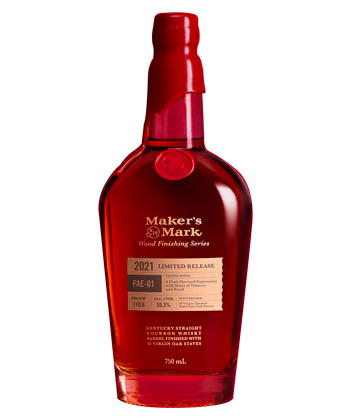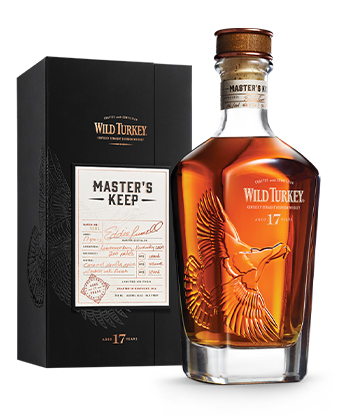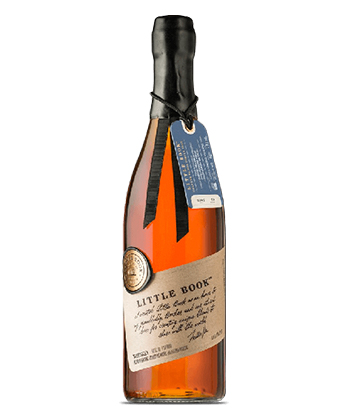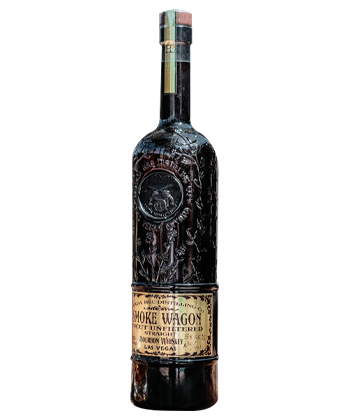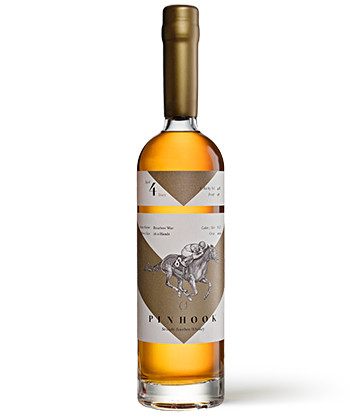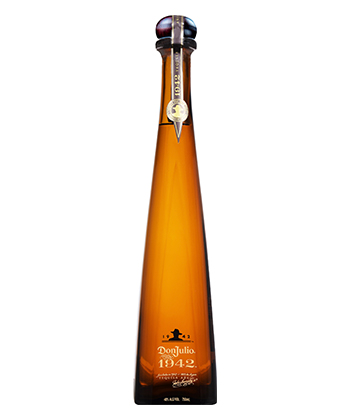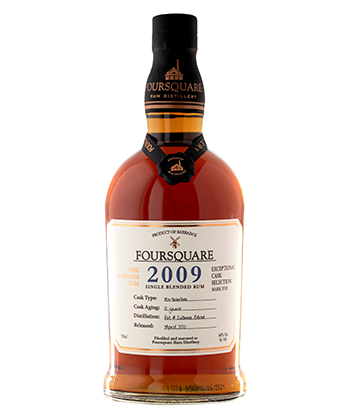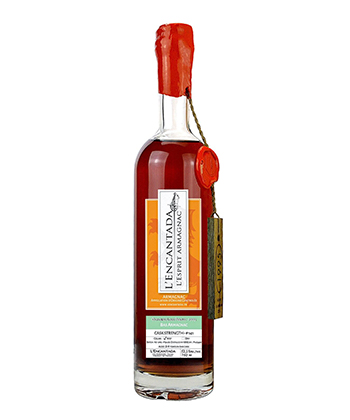All September on VinePair, we’re turning our focus to America’s spirit: bourbon. For our third annual Bourbon Month, we’re exploring the industry legends and innovators, our favorite craft distilleries, new bottles we love, and more.
Just as the unicorn is a mythical creature, the often bandied-about stuff of legends, its mesmerizing beauty frequently discussed but rarely seen, so too are many of the most famous bottles in the bourbon world today. Unlike that spiral-horned equine, however, there was a time these whiskey unicorns actually appeared “in the wild”— in other words, on store shelves — before hunters started taking them out.
First there was Pappy Van Winkle, and when that disappeared they came for the Buffalo Trace Antique Collection (BTAC). They started calling it “bee-tack” and when that five-bottle yearly release dried up they moved on to other allocated whiskeys from Sazerac Co.’s Buffalo Trace Distillery, namely E.H. Taylor, Jr. and Elmer T. Lee.
At some point, circa 2013 or so, someone figured out that anything named Weller also used the same wheated mash bill as Pappy and eventually these former $25 shelf bourbons were also gone. The same fate would soon befall Eagle Rare, Sazerac Rye, and the flagship Buffalo Trace, an $18 bottle many bars used to use in their well drinks. Then they came for Blanton’s — yet another Buffalo Trace release — that had been a reliably nice, modestly priced, always-available bottle since its inception in 1984, but was suddenly a unicorn, with liquor store owners now gouging customers.
A stranger fate would befall Stagg Jr., which Buffalo Trace had specifically created as an easier-to-find, harder-to-covet analogue for BTAC big brother George T. Stagg. Stranger than that would be the endless Weller line extensions that would seemingly appear out of thin air, then vanish just as quickly.
The point is, it’s not hard to predict the next bourbon unicorn — it will be any new releases or line extensions from the Buffalo Trace Distillery. (I’ve recently even joked that Wheatley Vodka could become one, once bourbon dorks realize it, too, employs the same wheated mash bill as, yes, Pappy.)
That said, if we’re looking beyond Buffalo Trace, if we’re looking beyond the few other yearly unicorns coming from other Kentucky distilleries — stuff like Old Forester Birthday Bourbon, Heaven Hill’s Parker Heritage Collection, Four Roses Limited Edition Small Batch, and anything Willett (except Pot Still) — and also ignore the artificial unicorns created by silly private barrel selections, then what bottles currently available on shelves…
Might one day not be?
Bourbon Unicorns, the Next Class
Buffalo Trace Kosher Wheat Recipe ($40)
Considering everything Buffalo Trace touches turns to unicorn, even more so if it’s a wheated bourbon like Pappy, I remain stupefied that this well-priced offering has never reached such vaunted status. One of a trio of bottles (there is also a Kosher Rye Recipe bourbon and Kosher Straight Rye) released at the end of Passover each year, it’s complex, a little sweet, easy-drinking, and of a generous proof. If Weller is often seen as “poor man’s Pappy,” why isn’t Kosher Wheat seen as “the chosen people’s Pappy”? Maybe gentile bourbon collectors simply don’t realize that they’re allowed to drink this? Still, don’t be surprised if one day it is no longer available for your Kiddush.
Maker’s Mark Wood Finishing Series ($60)
High-proof and wheated, slightly different in flavor profile year to year, in lovely packaging, and fairly limited to boot, this annual series seems ripe to become a unicorn one day. And yet, so many “taters” think they are above the typically-seen-as-entry-level Maker’s Mark to ever explore this intriguing offshoot. Debuting in 2019 with something called “RC6,” 10 proprietary wooden staves of varying roast, toast, char, and bake levels are added to a fully mature barrel of Maker’s Mark. The staves create an enhanced version of the brand’s Cask Strength, one that amplifies, say, the fruity notes (in the case of RC6) or the woody richness (in this March’s FAE-01). Maybe it seems too gimmicky, maybe the inscrutable nomenclature is a turnoff, but once anyone tastes these, they instantly want to clear shelves of them.
Wild Turkey Master’s Keep ($175)
Beloved by the cognoscenti, Wild Turkey has always been wrongly seen as an economical pour by the mainstream. Even when the legendary distillery began releasing this handsomely packaged series in 2015 with a 17-year-old bourbon, little collector interest was elicited. Each year since, a new, well-aged bourbon or rye has followed, and though all are critically acclaimed, they typically remain on shelves. This year’s release of Wild Turkey Russells’ Reserve 13-Year might foretell a different future, however, as it has been virtually unseen at retail. Might the hoi polloi have finally caught on to Wild Turkey’s greatness and might the same sad fate befall future editions of Master’s Keep? The newest entry, a toasted oak finished bourbon mysteriously called ONE, is slated for this September.
Little Book ($125)
Similar to Wild Turkey, very few unicorns seem to be created by the Jim Beam distillery. The rare examples would be the occasional Booker’s line extensions, like Booker’s Rye (in 2016) and Booker’s 25 and 30 (in 2013 and 2018 respectively). Now, while the beloved “regular” Booker’s is a little too regular to ever become a unicorn — with three to four releases per year — Little Book does seem to have the potential. With “Chapter 1” first released in the fall of 2017, a new installment of Beam scion Freddie Noe’s cask-strength whiskey has followed each year, each blend utilizing the full Beam Suntory portfolio to pluck intriguing whiskeys from across the globe. Chapter 5, called “The Invitation,” a blend of four bourbons and ryes of varying ages, was just released, and despite the handsome wooden box and somewhat small bottle count, you should be able to easily find one. The same might not be true down the road, however.
Smoke Wagon Uncut Unfiltered ($60)
The fervor for this MGP-sourced, barrel-proof bourbon bottled out of Las Vegas remains absolutely insane. In certain strata of the internet — an unofficial, private Smoke Wagon enthusiasts group on Facebook currently counts 3,000 members — any and all Smoke Wagon is coveted, hoarded, and often flipped for multiples of its MSRP. And yet, there are plenty of places in America where Smoke Wagon’s smallest-batch release can still be found on store shelves at reasonable prices. (One reason could be that 21 different batches of Uncut Unfiltered were dropped in 2020 alone!) More than any of the others on this list, this is a potential unicorn purely driven by hype — as noted, it’s fairly young, fairly common MGP “juice,” no different than what so many other bottlers (like Smooth Ambler) are putting out, minus the hoopla. And yet, one can’t ignore the insatiable thirst for Smoke Wagon. Remember, unicorns need not always make sense.
Pinhook Bourbon War Vertical Series ($50)
Yet another MGP-sourced release, this one has a much better gimmick than Smoke Wagon and its gimmick is the reason its unicorn potential is likely. In the summer of 2019, Pinhook began this 9-year vertical project based on a group of 1,350 bourbon and rye barrels founder Sean Josephs laid down in the fall of 2015. Each year, 150 barrels of bourbon and 50 barrels of rye will be released from the group — meaning, if you collect the entire series you will be able to compare how the exact same bourbon (or rye) tastes at every age between 4 years old and 12 years old. With Pinhook’s classy packaging and dwindling availability each year, a full 9-year set seems destined to be a collector’s item by 2027 when the project is complete.
Unicorns of Another Ilk
As bourbon unicorns become fewer and farther between, many collectors have moved to either A) single-malt Scotch, where well-aged, well-priced offerings are rarely allocated, or B) other spirits that are bourbon-like caramel and vanilla flavor bombs. Accordingly, these distilleries and independent bottlers have begun playing to the bourbon crowd, offering single-barrel, cask-strength, limited-edition, and pricy bottlings to tickle their fancies. (While some, like the Sazerac-owned Corazón tequila seem preternaturally raised to be unicorns, as the tequila is aged in George T. Stagg and William Larue Weller barrels.) Here are three contenders.
Don Julio 1942 ($150)
Arguably already America’s first tequila unicorn, until very recently the Diageo-owned offering was ubiquitous and easy to land if you had the required cash. A 2010 redesign of the bottle into a sleeker, taller pylon made it more iconic, but it would take A-listers like Kylie Jenner and Derek Jeter using it as party fuel and flexing bottles online to finally push it into rare territory. Today, many liquor store owners dub the two-and-a-half-year-old añejo the “Pappy Van Winkle of tequila,” and, indeed, its sweet, vanilla-laden profile diverts far from the vegetal agave notes many tequila connoisseurs crave.
Foursquare Rum ($75-$125)
Located on an 18th-century sugar plantation on the Caribbean island of Barbados, Foursquare Rum’s distilling operations have only been going on since 1996. Stateside fame has come even more recently, when in the mid-2010s, whiskey connoisseurs began to realize how bourbon-y a lot of the rum brand’s top releases were. (Many are even aged in ex-bourbon barrels.) Reasonably priced (though rising!) and readily available (though less so than before!), well-aged, high-proof, one-off releases like Empery and the Exceptional Cask selections seem poised for future unicorn status. While rum nuts certainly like Foursquare, many tend to favor funkier rums like those from Hamden Estate and Worthy Park. Alas, if Don Julio is the Pappy of tequila, Foursquare has surely become the “Pappy of rum.”
L’Encantada Armagnac ($99-$250)
While single barrels were generally disqualified from this exercise, this bottler only releases single barrels from a variety of tiny Armagnac estates like Lous Pibous and Le Frêche (with the exception of its excellent XO Armagnac, a blend of barrels usually limited to around 2,000 bottles). If bourbon drinkers are seemingly willing to spend any amount of money on whiskey, the same is not quite true for brandy, even if it’s older, rarer, and assuredly more delicious. (Taste hardly matters for unicorn status — sad but true.) But the tide is slowly turning and two- and sometimes three-decades-aged releases from L’Encantada that used to sell for under $100 and used to linger on shelves for months, are now going for two to three times that and lasting mere weeks in some cases. It’s not hard to think these gorgeous orange-waxed bottles might soon become, cough, the Pappy of Armagnac.
